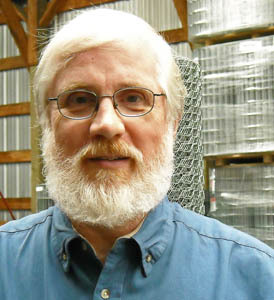
High tensile deer fence
Are you thinking about using field fence to enclose your animals and property? Agricultural fencing is available in two types of wires: low carbon and high tensile. What is the difference? Is there an advantage to using one over the other?
Low carbon - For years, traditional field and farm fence has been made using low carbon wire. Low carbon wire used in fencing is usually made from steel rod with a carbon content of approximately 0.10%. It is easy to work with but is prone to stretching and sagging. It requires regular maintenance. It is weaker than high tensile wire.
High tensile - This wire has become very popular due to its advantages. It is made from steel rod with a carbon content of approximately 0.28%. Higher carbon content makes high tensile wire stronger. It's higher psi rating gives it a higher breaking strength. To get the same strength, you can use a lighter gauge high tensile wire in place of a heavier low carbon wire. You can complete your project at a lower cost.
Lighter weight also means easier handling and installation. Fewer posts are required so you can increase the spacing between posts. If installed properly, high tensile fences require little maintenance - re-tensioning is not necessary.
During installation high tensile fencing requires less tension to make it tight. The wire is stiffer and will not stretch and sag. This characteristic gives it flexibility - it will give and bounce back when animals lean against it.
Install a high tensile fence and you will have a longer lasting, lower maintenance fence for less cost than a conventional low carbon fence. Which would you choose?














![🌲 [Hidden Hero] What Most People Overlook But Can’t Afford To](https://content.cdntwrk.com/mediaproxy?url=https%3A%2F%2Fwww.louispage.com%2Fhs-fs%2Fhubfs%2FChatGPT%2520Image%2520Dec%252011%252C%25202025%252C%252009_24_15%2520AM.png%3Fwidth%3D753%26height%3D1130%26name%3DChatGPT%2520Image%2520Dec%252011%252C%25202025%252C%252009_24_15%2520AM.png&size=1&version=1765476183&sig=ab9c3aeedba193e746f2fd0de82eaafb&default=)








